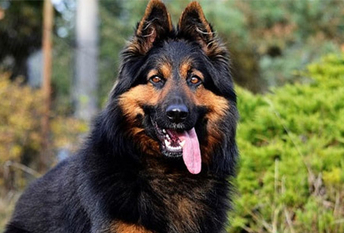The Japanese Spitz has a profuse, white, double coat. The undercoat, which they shed twice per year, is thick and generous, with an outer coat that is longer. When they “blow” their coat (aka shedding), the entire undercoat is shed in the span of about 2 to 3 weeks. Daily brushing will be required to remove the fur, but the hair will inevitably be on your clothes, furniture, and floor. For most of the year though, this breed is low maintenance and only requires weekly brushing with infrequent baths unless the dog gets into something messy.Bathing too often can cause them to lose their natural oils and can irritate their skin, so once per season is sufficient. Luckily, the Japanese Spitz has a Teflon-like coat — that is to say,mud and dirt don’t stick to their fur. If they do get muddy, you simply wait for it to dry and then brush it out. As with all breeds, the Spitz’s nails should be trimmed regularly.
The Japanese Spitz adapts to many environments. They do well with lots of room to run like on farms and ranches but also fare well in little spaces like apartments. Either way, they do need regularexerciseand enjoy being with their families. Free, interactive run outside or a nice daily walk will benefit them physically and mentally. Afterward, they will be glad to climb up on the sofa with you while you read or watch TV. An essential thing to remember about Japanese Spitz is that they are companion dogs; they just want you to spend time with them and they will make you laugh and smile in return.
The Japanese Spitz needs a well-balanced diet. A good quality food either store-bought or homemade is fine. Feeding twice daily is the most commonly suggested feeding.Treatscan be an important aid in training, but giving too many can cause obesity. Learn about whichhuman foodsare safe for dogs, and which are not. Check with your vet if you have any concerns about your dog’s weight or diet.Clean, fresh water should be available at all times.
Japanese Spitz, in general, are a healthy, active breed that can live a happy life of up to 12 to 14 years of age. Some cases of Patella Luxation have been found within the breed and this can be tested for by your veterinarian. Puppies should be bought only from responsible breeders as working with areputable breeder, prospective owners can gain the education they need to learn about specific health concerns within the breed.
The Japanese Spitz is an intelligent breed and their eagerness to please make them highly trainable. They crave companionship and interaction with owners so, if left alone for long periods of time, they may develop problem behaviors. Earlysocializationandpuppy training classesare recommended. Without training, they will learn things, but not necessarily what you had in mind.











